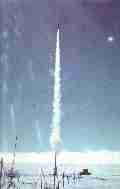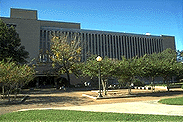

 Recent Publications
Recent Publications
 Past Campaigns
Past Campaigns
The Space Physics Group at the University of Houston conducts original research in the areas of atmospheric electricity, atmospheric chemistry, electric spacecraft propulsion, space physics and aeronomy, and upper atmospheric physics. The term space physics as used here incorporates the disciplines of ionospheric physics, magnetospheric physics, space plasma physics, solar heliospheric physics and cosmic rays physics. The space physics group provides instruction in these topics to the students of the University of Houston. The main objective is to provide a source of qualified, trained personnel to the space-oriented employers of the Houston area. Finally, members of the group provide knowledgeable consulting services in these areas and topics to all elements of the Houston community that request such support.
As a group, we have conducted experiments to measure and image electron bremsstrahlung beneath auroras, to measure electron bremsstrahlung accompanying both natural and triggered VLF events, auroral zone electric fields, plasmapause electric fields, electric fields at high altitude due to thunderstorms, the electromagnetic radiation spectrum of lightning at high altitude, the electromagnetic radiation accompanying the production of sprites, VLF magnetic fields accompanying active experiments in the ionosphere, dc plasma properties in the ionosphere near pulsating aurora, ionospheric electric fields near the magnetospheric cusp, ground level atmospheric electric field and air-Earth current at the South Pole, and the properties of the exhaust plasma of the VASIMR engine.

The University has also provided the Space Physics Group with several computers for data analysis. The main Space Physics computers are 3 DEC AlphaServers with 64-128 MB RAM each, 18-40 GB of disk each, a TZ87 20GB cartridge tape drive, CD-ROM readers, and network connections to a variety of other peripherals. In addition, the group has a total of 8 PC workstations all connected to the Campus LAN. The main Physics data server, thoth.phys.uh.edu has 2.5 Terabytes of disk space. Since the Space Physics Group purchased ALL the disk drives for this machine, we have a clear claim on all the space we will ever need.
The Space Physics group has exclusive use of the following equipment. All items are located in the laboratory space described above. {1} Extensive electronic lab. test equipment, including 4 multi-beam wide-band Tektronix oscilloscopes, a Keithley electrometer and assorted other standard equipment. {2} Thermal and vacuum testing chambers. {3} Dark box with goniometer for X ray camera calibration. {5} Printed circuit board photo-lithography and etching equipment.
{1}The Physics Department has a large full-service machine shop with a staff of 2 full-time machinists. {2} The Physics Department office provides full clerical and bookkeeping support. At present, the University budget supports a staff of 5 FTE senior personnel augmented with several work-studies.
You may request more information from: Prof. James R. Benbrook, or Prof. Edgar A. Bering, III.